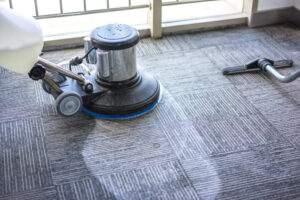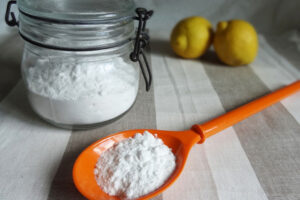In today’s world, the need for effective and environmentally friendly cleaning solutions is more crucial than ever. Industries across various sectors require reliable cleaning agents to maintain the functionality and longevity of their equipment.
Aqueous cleaners have emerged as a popular choice due to their efficiency and eco-friendliness. These water-based cleaning agents are specifically designed to clean parts and components in a variety of applications, from automotive to manufacturing.
This comprehensive guide will delve into the world of aqueous cleaners, exploring their benefits, applications, types, and the best practices for their use. By the end of this guide, you will have a thorough understanding of aqueous cleaners and how they can be an integral part of your cleaning process.
What are Aqueous Cleaners?
Aqueous cleaners are water-based solutions used for cleaning and degreasing parts and components. Unlike solvent-based cleaners, which rely on harsh chemicals, aqueous cleaners utilize water as the primary solvent, combined with detergents, surfactants, and other additives to enhance cleaning performance.
These cleaners are designed to remove a wide range of contaminants, including oils, greases, dirt, and other residues, making them suitable for various industrial and commercial applications.
Benefits of Aqueous Cleaners
Environmentally Friendly
Aqueous cleaners are considered more environmentally friendly compared to solvent-based cleaners. They typically have lower volatile organic compounds (VOCs) and hazardous air pollutants (HAPs), reducing the impact on air quality and the environment. Additionally, they are often biodegradable and less toxic, making them safer for both users and the environment.
Cost-Effective
Using aqueous cleaners can be cost-effective in the long run. While the initial investment in equipment and cleaners may be higher, the operational costs are generally lower.
Aqueous cleaners can be recycled and reused multiple times, reducing the need for frequent replacement. Moreover, they minimize the need for costly disposal procedures associated with hazardous waste.
Effective Cleaning
Aqueous cleaners are highly effective at removing a wide range of contaminants. The combination of water and specialized additives allows for deep penetration and removal of oils, greases, and other residues. They can clean complex parts and hard-to-reach areas that solvent-based cleaners might struggle with.
Safety
Aqueous cleaners are generally safer to use than solvent-based alternatives. They are less flammable and produce fewer harmful fumes, reducing the risk of fires and health issues for workers. This makes them an ideal choice for environments where safety is a top priority.
Types of Aqueous Cleaners
Alkaline Cleaners
Alkaline cleaners are the most common type of aqueous cleaners. They contain alkaline compounds, such as sodium hydroxide or potassium hydroxide, which are effective at breaking down oils, greases, and other organic materials. These cleaners are suitable for heavy-duty cleaning tasks and are commonly used in automotive and industrial applications.
Acidic Cleaners
Acidic aqueous cleaners contain acids like hydrochloric acid or citric acid. These cleaners are effective at removing rust, scale, and other inorganic contaminants. They are often used in metalworking and maintenance applications to clean and prepare metal surfaces.
Neutral Cleaners
Neutral aqueous cleaners have a pH close to 7, making them less aggressive than alkaline or acidic cleaners. They are suitable for cleaning delicate parts and surfaces that may be damaged by more aggressive cleaners. Neutral cleaners are commonly used in the electronics and aerospace industries.
Enzymatic Cleaners
Enzymatic aqueous cleaners use enzymes to break down specific types of contaminants, such as proteins, fats, and carbohydrates. These cleaners are often used in medical and food processing industries where organic residues need to be effectively removed without harsh chemicals.
Applications of Aqueous Cleaners
Automotive Industry
In the automotive industry, aqueous cleaners are used for cleaning engines, transmissions, and other components. They effectively remove oils, greases, and other contaminants, ensuring the proper functioning of the vehicle’s parts. Aqueous cleaners are also used in parts washers, which are essential for maintaining the cleanliness of automotive components.
Manufacturing
Manufacturing processes often generate a variety of contaminants that need to be removed to maintain product quality and equipment efficiency. Aqueous cleaners are used to clean machined parts, molds, and other manufacturing equipment.
They help in removing cutting fluids, coolants, and other residues, ensuring the longevity and performance of the equipment.
Aerospace Industry
In the aerospace industry, precision and cleanliness are paramount. Aqueous cleaners are used to clean aircraft components, engines, and other critical parts. They effectively remove oils, greases, and other contaminants without damaging sensitive materials. The use of aqueous cleaners helps maintain the reliability and safety of aerospace equipment.
Medical and Healthcare
In the medical and healthcare sectors, cleanliness is critical to preventing infections and ensuring patient safety. Aqueous cleaners are used to clean medical instruments, equipment, and surfaces.
They effectively remove biological contaminants, such as blood, tissue, and other organic residues, ensuring the sterility and safety of medical environments.
Food Processing
In the food processing industry, maintaining cleanliness and hygiene is essential to prevent contamination and ensure food safety.
Aqueous cleaners are used to clean processing equipment, surfaces, and containers. They effectively remove food residues, oils, and other contaminants, ensuring the cleanliness and safety of food processing environments.
Best Practices for Using Aqueous Cleaners
Selecting the Right Cleaner
Choosing the appropriate aqueous cleaner is crucial for achieving the desired cleaning results. Consider the type of contaminants you need to remove, the material of the parts being cleaned, and the cleaning method. Consulting with a supplier or manufacturer can help you select the most suitable cleaner for your specific application.
Proper Dilution
Proper dilution of aqueous cleaners is essential for effective cleaning. Follow the manufacturer’s instructions for dilution ratios to ensure optimal performance. Using too much cleaner can lead to waste and increased costs, while using too little can result in inadequate cleaning.
Temperature and Time
The temperature and duration of the cleaning process can significantly impact the effectiveness of aqueous cleaners. Higher temperatures generally enhance the cleaning action, but it’s essential to ensure that the parts being cleaned can withstand the temperature. Similarly, allowing sufficient time for the cleaner to work ensures thorough removal of contaminants.
Agitation
Agitation helps enhance the cleaning action of aqueous cleaners by promoting the movement of the cleaning solution and dislodging contaminants. This can be achieved through mechanical agitation, ultrasonic cleaning, or spray cleaning. The type of agitation method used will depend on the specific cleaning application and equipment available.
Rinsing and Drying
Proper rinsing and drying are crucial steps in the cleaning process to ensure that no residues are left behind. Rinsing with clean water removes any remaining cleaning solution and contaminants, while drying prevents water spots and corrosion. Using air blowers, drying ovens, or vacuum drying can help achieve effective drying.
Maintenance and Monitoring
Regular maintenance and monitoring of the cleaning process are essential for consistent results. This includes checking the concentration and condition of the cleaning solution, inspecting and cleaning equipment, and monitoring the cleanliness of the parts being cleaned.
Implementing a routine maintenance schedule ensures the longevity and effectiveness of the cleaning process.
Conclusion
Aqueous cleaners are an effective, environmentally friendly, and cost-effective solution for cleaning parts and components in various industries. Their versatility and safety make them an ideal choice for a wide range of applications, from automotive and manufacturing to aerospace and healthcare.
By understanding the different types of aqueous cleaners, their benefits, and best practices for their use, you can ensure optimal cleaning performance and maintain the functionality and longevity of your equipment.
Adopting aqueous cleaners not only enhances your cleaning process but also contributes to a safer and more sustainable environment.




